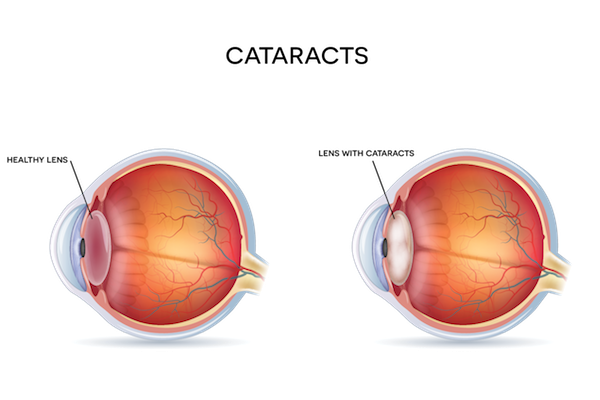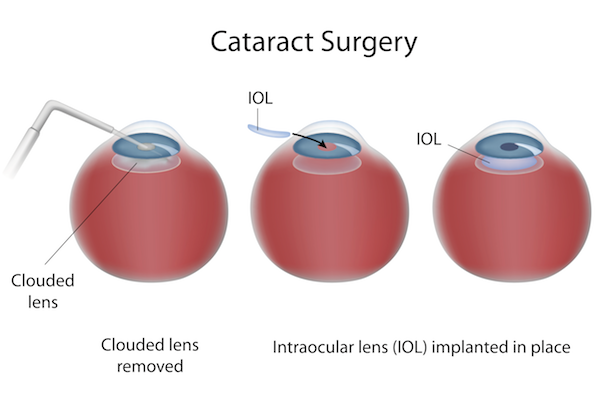Eye diseases and conditions
Cataracts


Cataracts develops when the natural lens inside the eye becomes cloudy. Cataracts are most generally part of the aging process of the eye, but can also be influenced by trauma to the eye, certain medications (especially steroids), radiation, family history, and some systemic conditions, like diabetes.
Cataract density occurs across a broad spectrum, so when they are mild, patients often aren’t aware they even have a cataract. Most cataracts will progress very slowly over time. Once cataracts begin to interfere with your vision, it’s time to consider cataract surgery. Cataracts will typically cause glare, poor night vision, double vision in one eye, increased dependency on light for reading, perceived dimness of colors, and an overall blurring of the vision. The only way to treat a cataract is with surgery. Once you feel your vision has deteriorated to a point that interferes with your daily activities, you should have an eye examination to evaluate if you are a candidate for cataract surgery. Surgery is an outpatient procedure done with local anesthetic. The cataract will be removed and then replaced with an intraocular lens implant. Post-operatively, you should expect to use eye drops for several weeks and have a few follow up appointments. Overall, cataract surgery has a very high success rate. You should keep in mind that if you have other ocular diseases, these will limit the visual outcome of cataract surgery. While cataract surgery is a safe procedure, like any surgery there is potential for complications. If you experience any problems after surgery, especially significant pain or loss of vision, you should call your eye care provider right away.

